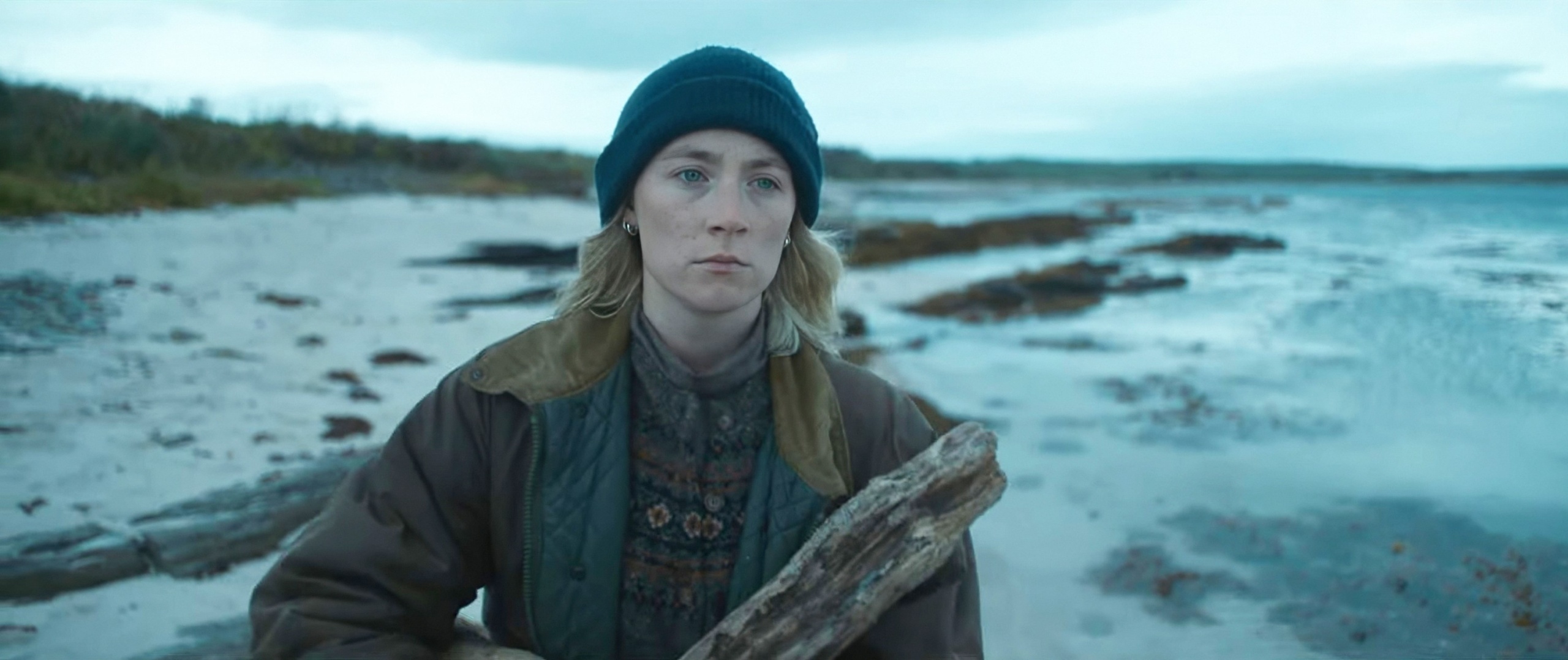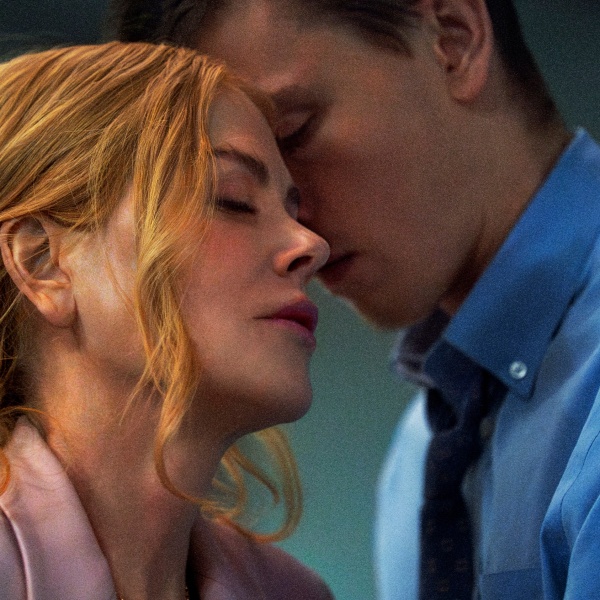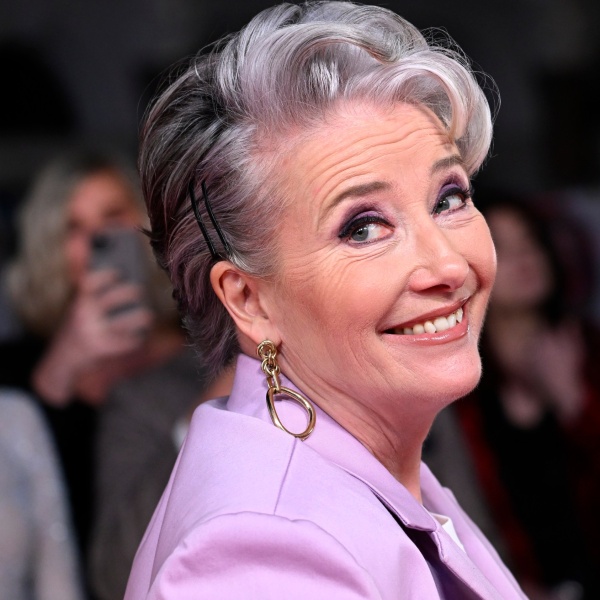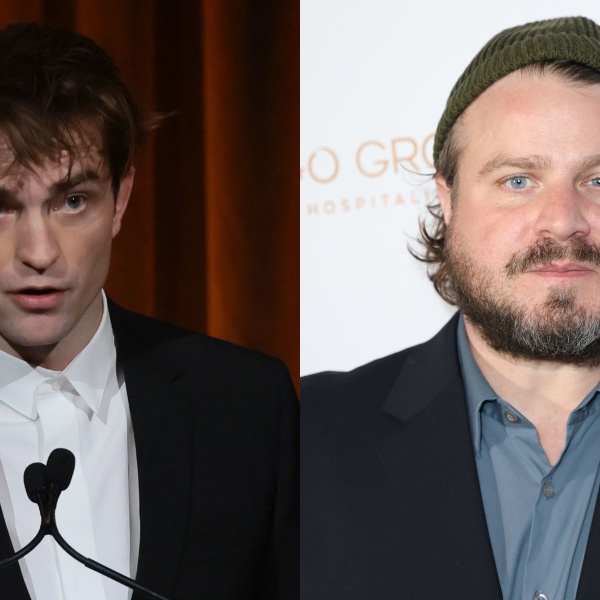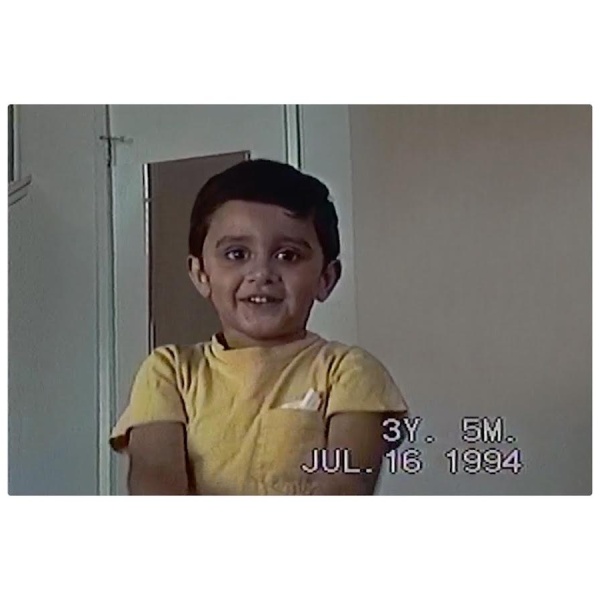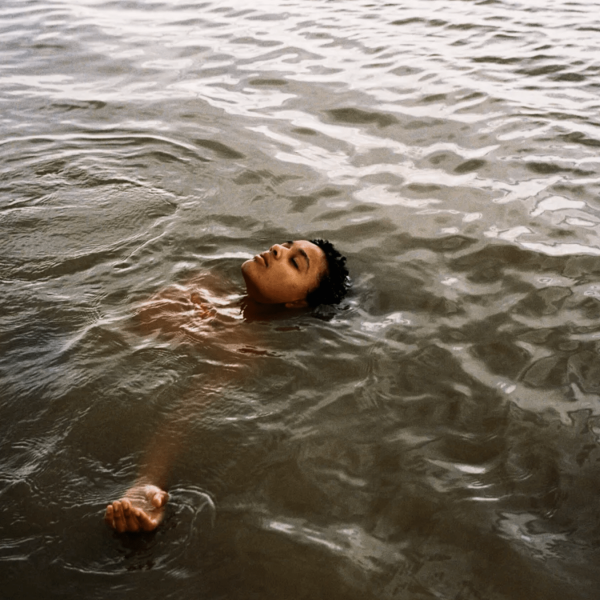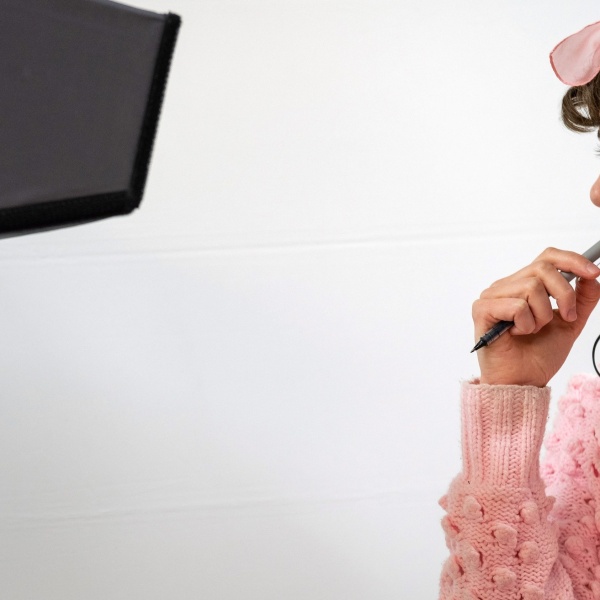There’s an easy, cliched way to sound design drunkenness. According to re-recording mixer Gregor Bonse, the film convention for conveying any sort of drug trip or inebriation is a step-and-repeat pattern of putting big reverb effects on key sounds and dialogue so that the scene in question feels unreal and detached; the sound tells us, loudly and obviously, that the characters are out of their minds. The approach can be great fun in a stoner comedy but can also put distance between the characters and the audience.
However, the pleasure and pain of Nora Fingscheidt’s film “The Outrun” is to stay — fearlessly, relentlessly, achingly — in the subjectivity of one-time biology PhD student Rona (Saoirse Ronan) as she struggles with alcohol addiction and finding a direction for her life. The film’s sound design, accordingly, doesn’t make easy delineations between sober and not, wounded or healed; even the sounds of Orkney and London, the film’s two core locations, are blended to help the audience feel what Rona’s experience actually is.
There’s an interior focus to the sound design that supervising sound editor Dominik Leube told IndieWire often came down to using “the right sounds at the wrong time.” When Nora’s on a drunken bender in London, for instance, the sound team wove in the sounds of waves and wind, throwing in incongruous and asynchronous sounds to mimic fragments of memory snapping to the surface. “[The filmmakers] gave us the freedom to play with these environments in a quite subjective manner,” Leube told IndieWire.
A lot of that sound-specific subjectivity was built into Fingscheidt’s and Amy Liptrot’s script and Liptrot’s memoir. Fingscheidt, in particular, collaborated with Bonse, Leube, and fellow sound designers Oscar Stiebitz and Jonathan Schorr as the script developed off of a “scriptment,” or prose treatment of the film.
They all collaborated on how sound could help bridge the gaps between time, place, and aspects of Rona’s personality, from her most painful recollections to what Leube called her “nerd layers” — voiceovers that are fascinated with nature and science. “Rona says that the screaming gulls [on Orkney] are sirens. The sea is traffic. She makes all these sonic comparisons between the two places, and that laid the groundwork for us to back and forth in time with sound,” Leube said.

“Throughout the process of refining the screenplay, we were able to add more of these ideas on how to transition between past and present and how we could go from Orkney to her past in London through sound,” Bonse told IndieWire. There was, eventually, a department head meeting just to see how “The Outrun” could push sound to keep us anchored to Rona’s subjectivity.
“I thought that was quite interesting that we were all able to contribute ideas. And Stefan [Bechinger], the editor, and Roy [Imer], the cinematographer, both also wanted to be inspired by how the film could sound,” Bonse said. “We wanted Rona’s drunk episodes to use asynchronicity as well as fragmentation, [and] it was cool to have Stefan on board with that.”
But even in less obviously sound-forward moments, the sound is working to get us to feel the emotions that are churning like a tide inside Rona. During one sequence, after watching her dad (Stephen Dillane) suffer in the throes of a bipolar episode and seeing an abandoned glass of wine on the table in his caravan, Bonse and Leube unleashed a huge outburst of tremor sounds.

“They’re essentially her struggle against addiction, and they’re intensely sound-designed,” Bonse said. Leube built a sample rig he could play live, like a keyboard, and combined psychologically resonant sounds for Rona to build those tremors: sounds of shaking and crumbling Earth, the noise of helicopter rotor blades, the sound of metal chopping through the wind.
In the face of that, it’s less surprising that Rona runs out of the trailer than that she stayed as long as she did. “She battles against her instinct to go back in and have a relapse, and as this battle ends, it comes to a total silence,” Bonse said. “She stands in front of the [trailer] and we see in her face that she’s made a decision. Then she walks back inside, and we know what that means. And at that point, the score takes over.”
“The Outrun” alternates sound and score, or different varieties of subjective sound, to give the audience a sense of Rona’s emotional volatility without the film ever spelling out those moments. But it often required figuring out how to get the catharsis point right and then working backward to effectively build towards them.
Some of the film’s early delights are moments where we go from hearing house music through Rona’s headphones to the peaceful nature sounds all around Ornkey, or the reverse. But that fun interplay is weaponized later, when Rona’s demons come rushing at her in a way no headphones can muffle.

“Nora said we should be really careful in how we use sound before that moment in Orkney. We [needed] to take it easy so nature could sound really big,” Bonse said. “If you listen to that scene objectively, that’s not what it would sound like, but in the moment, in the film, it feels right. That is her moment, the beginning of her healing journey. So we had to do that one first in order to know how much we could do before.”
“Everything you change can change the way you perceive something else,” Leube said. This was especially useful in shifting back and forth across time, emphasizing key sounds — like the painful crunch of Rona dropping her cell phone — and trusting the audience to catch their significance when they come back later.
“I was playing around with some signature sounds that find their way into Rona’s head — so even if we meet the sounds again one hour later in the movie in a different context, they’ll make sense to us [and will] feed the story. Everything is OK if it serves the story. It doesn’t have to be perfect,” Leube said.
